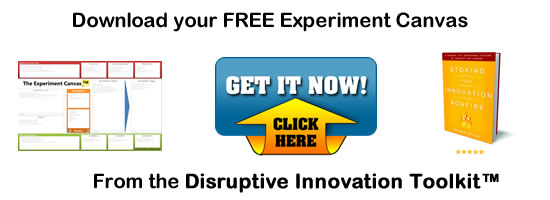Getting Clear on Your Strategy
 “If I had the key members of your executive suite all in the same room, would they all be able to articulate the essence of your business strategy clearly and consistently?” I asked the executive vice president of strategy.
“If I had the key members of your executive suite all in the same room, would they all be able to articulate the essence of your business strategy clearly and consistently?” I asked the executive vice president of strategy.
“Probably not,” she replied. “But I do know we need a new one, because the current one isn’t working.”
I hear this quite a lot. It’s fine to want a new strategy, but it doesn’t make sense to move to a new strategy if you’re not completely clear on the current one, because formulating a new strategy starts with defining a strategic problem culled from the current strategy.
You know you’re clear on strategy when:
- you know what it means to win with customers.
- you know what it means to win against competitors.
- you understand the dimensions along which you’re able to win–with customers and against competitors.
- you know who your key customers are.
- you can describe your customers in a single sentence.
- you know the channels through which you serve your customers.
- you know your most winning product or service.
- you know all the regions in which you offer those products/services.
- you know the stages of production in which you compete.
- you know where along the value stream you participate, relative to competitors.
- you have consensus on whether you are basically broad or basically narrow in your approach.
- you understand your unique competitive advantage.
- you know exactly why customers choose you over the competition.
- you know whether your competitive advantage is either low cost or differentiation (not both).
- you understand how your competitive advantage is linked to where you play.
- you know your key strengths and activities that bring your strategy to life.
- you understand which of your strengths are superior to the competition’s.
- you know which of your strengths are most relevant to customers.
- you understand the systems that give rise to and support your capabilities.
- you have a method to clearly gauge the success of your strategy.
Now, allow me to add a bit of separation and categorization to these 20 questions, and you’ll see Roger Martin’s strategic cascade of five integrated questions appear. I’ve adopted the framework both personally and professionally, and use it in just about every activity for which I want to achieve success, from biking to business.
1. What is our winning aspiration?
- we know what it means to win with customers.
- we know what it means to win against competitors.
- we understand the dimensions along which we’re able to win–with customers and against competitors.
2. Where do we play?
- we know who our key customers are.
- we can describe our customers in a single sentence.
- we know the channels through which we serve our customers.
- we know our most winning product or service.
- we know all the regions in which we offer those products/services.
- we know the stages of production in which we compete.
- we know where along the value stream we participate, relative to competitors.
- we have consensus on whether we are basically broad or basically narrow in our approach.
3. How do we win?
- we understand our unique competitive advantage.
- we know exactly why customers choose us over the competition.
- we know whether our competitive advantage is either low cost or differentiation (not both).
- we understand how our competitive advantage is linked to where we play.
4. What capabilities do we need?
- we know the key strengths and activities that bring our strategy to life.
- we understand which of our strengths are superior to the competition’s.
- we know which of our strengths are most relevant to customers.
5. What management systems must we have?
- we understand the systems that give rise to and support our capabilities.
- we have a method to clearly gauge the success of our strategy.
Once you’re clear on your current strategy, then (and only then!) you can talk about the most troubling areas of that strategy, and begin to contemplate a new one. The test, and final question, is this:
If I had your executive team in a room together, would there be consensus on all these questions?
Wait! Before you go…
Choose how you want the latest innovation content delivered to you:
- Daily — RSS Feed — Email — Twitter — Facebook — Linkedin Today
- Weekly — Email Newsletter — Free Magazine — Linkedin Group
 Matthew E. May is the author, most recently, of Winning the Brain Game: Fixing the 7 Fatal Flaws of Thinking.
Matthew E. May is the author, most recently, of Winning the Brain Game: Fixing the 7 Fatal Flaws of Thinking.
NEVER MISS ANOTHER NEWSLETTER!
LATEST BLOGS
Three things you didn’t know about credit cards
Photo by Ales Nesetril on Unsplash Many of us use credit cards regularly. From using them for everyday purchases to…
Read MoreFive CV skills of a business-minded individual
Photo by Scott Graham on Unsplash The skills listed on a CV help employers quickly understand your suitability for a…
Read More


